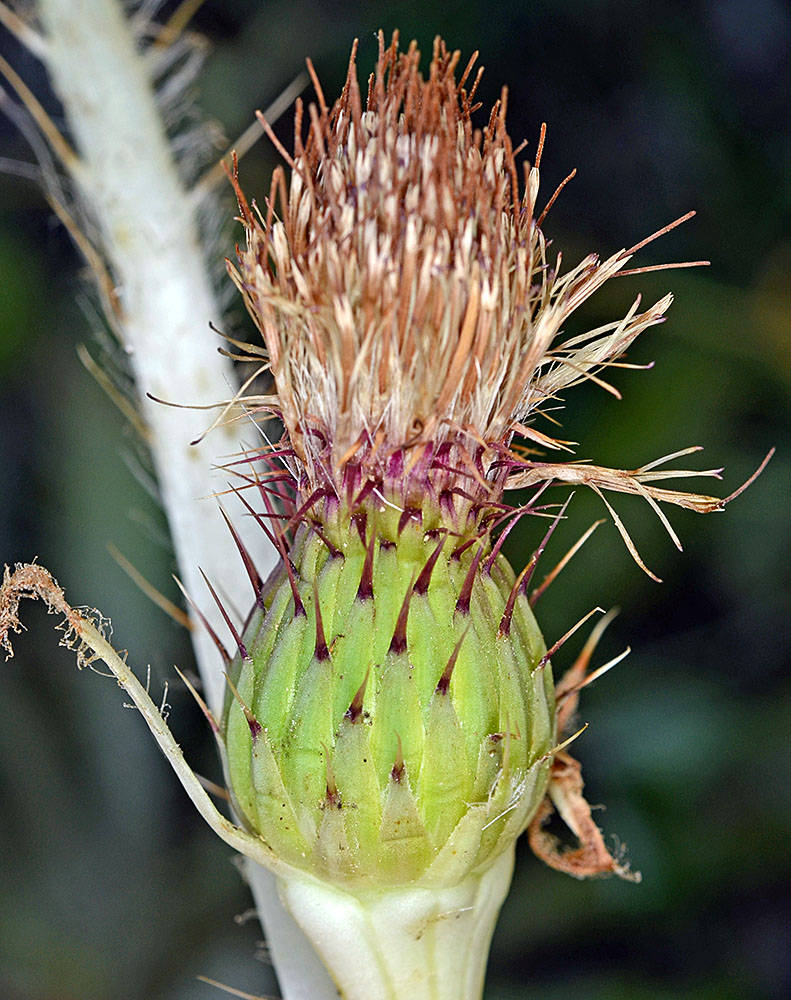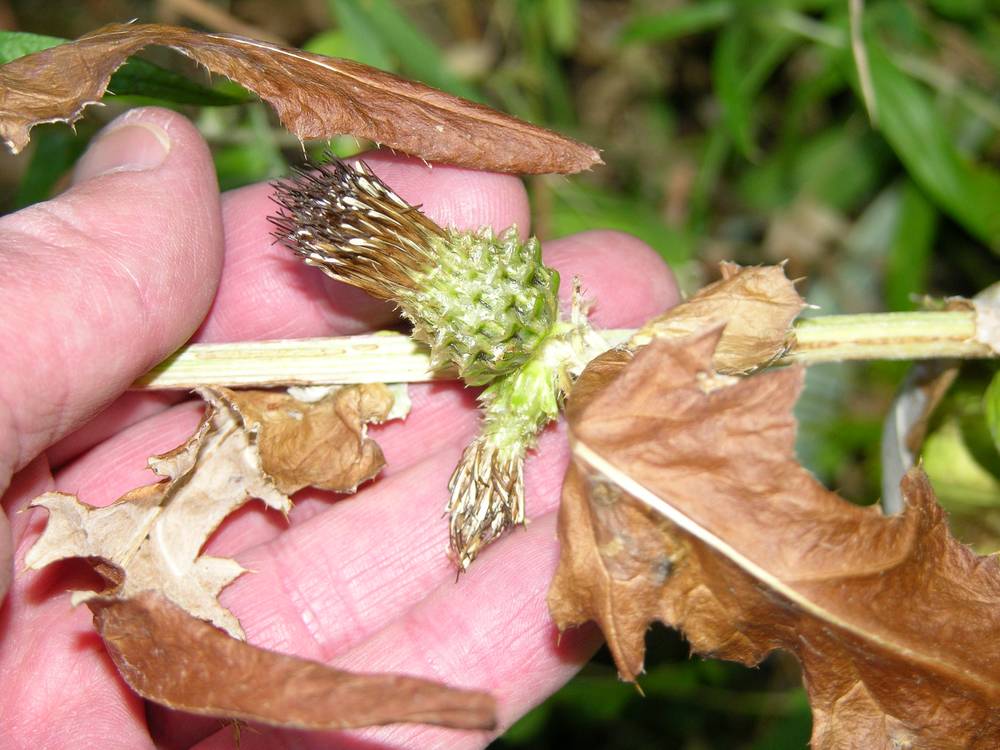Cirsium scariosum
Cirsium
dinnerplate thistle, elk thistle, meadow thistle
thistle
often acaulescent or short-caulescent, sometimes caulescent with a single bushy-branched stem; stout and fleshy, glabrous or sparsely arachnoid-tomentose.
erect, branched or simple, sometimes spiny-winged.
linear to elliptic, 10–40 × 3–8 cm;
margins entire to deeply pinnately divided; plane or undulate;
spines usually thin to moderately thick, 2–15 mm;
surfaces abaxially glabrous to densely arachnoid-tomentose, adaxially glabrous to thinly tomentose or villous;
basal usually present at flowering, sessile or petiolate.
basal and cauline, alternate;
margins entire to deeply toothed or pinnately lobed;
lobes and teeth usually spiny.
heads solitary at branch tips or distal axils, or in raceme- or panicle-like arrays.
ovoid to hemispheric, 1–3(4) × 1.5–6 cm, glabrous to thinly arachnoid-villous.
flat to convex; very bristly;
paleae 0.
corollas 20–40 mm, white to purple, sometimes rose or pink-tinged;
tubes 9–22 mm;
throats 4–12 mm;
lobes 4–10 mm;
styles conspicuously exserted;
tips 3–8 mm.
corollas bilateral, white or cream-colored to pink, red, or purple;
style tips elongate.
imbricate; without glutinous ridges;
spines thin, 0–12 mm.
many in 5–20 series, imbricate or not;
margins usually entire or occasionally scarious, ciliate-spiny, or erose;
midveins sometimes with glutinous ridges.
4–6.5 mm; light to dark brown, occasionally striate;
pappi 15–35 mm.
compressed; ovoid, tan to dark brown, glabrous, attachment scar off-center;
pappi in 3–5 series, persistent or deciduous in rings.
1–many.
discoid, pedunculate or sessile.
Cirsium scariosum
Cirsium
Wet meadows, forest openings, sagebrush areas, pastures. Flowering Jun–Aug. 100–2000 m. BR, BW, Casc, ECas, Owy, Sisk, WV. CA, ID, NV, WA; north to British Columbia, northeast to Alberta, east to WY, southeast to NM, Quebec. Native.
Cirsium scariosum is known to hybridize with other native species where their ranges overlap.
Africa, Asia, Europe, North America. ~200 species; 15 species treated in Flora.
The taxonomy of Cirsium is complicated by hybridization and a high level of morphological variation within species. Style tips are measured including the somewhat swollen nodes and fused portions of style branches. Cirsium ochrocentrum var. ochrocentrum has been collected once in Oregon (2013) but does not appear to be naturalized.
Bridget Chipman
Bridget Chipman
- Local floras:
BC,
CA,
OR,
WA
- Local Web sites:
CalFlora,
CalPhotos,
Flora NW,
PNW Herbaria,
Turner Photog.
WildflowerSearch
iNaturalist (observations)
USDA Plants Database
- LBJ Wildflower Center
- SEINet
- Plants of the World Online
- Encyclopedia of Life
- Wikipedia
- Google Image Search




